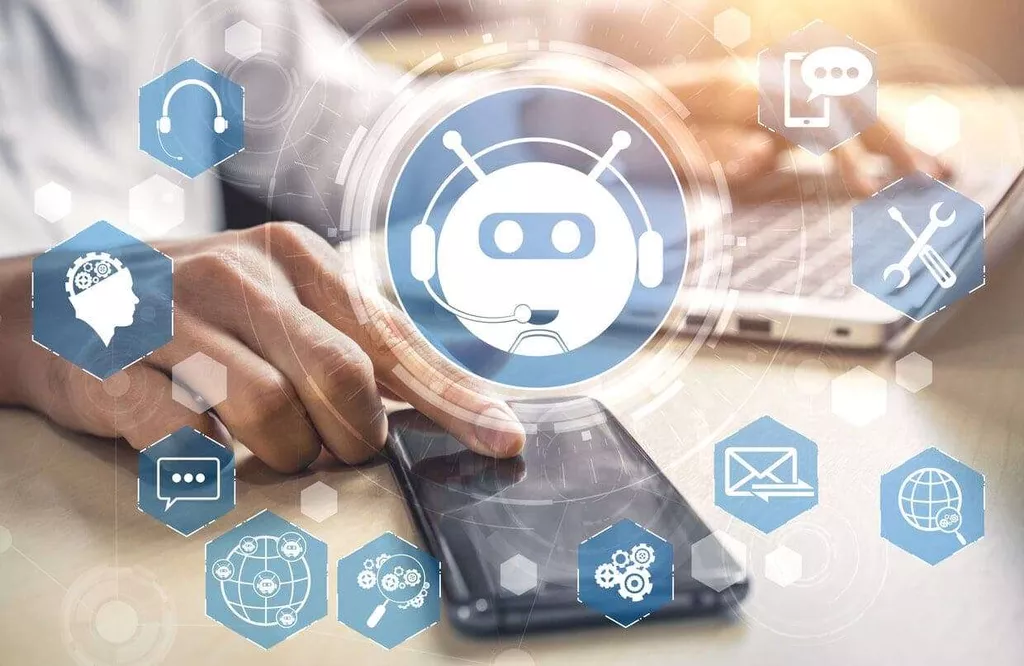What is Machine Learning? ML Tutorial for Beginners
This involves tracking experiments, managing model versions and keeping detailed logs of data and model changes. Keeping records of model versions, data sources and parameter settings ensures that ML project teams can easily track changes and understand how different variables affect model performance. Explaining the internal workings of a specific ML model can be challenging, especially when the model is complex. As machine learning evolves, the importance of explainable, transparent models will only grow, particularly in industries with heavy compliance burdens, such as banking and insurance. The gradient of the cost function is calculated as a partial derivative of cost function J with respect to each model parameter wj, where j takes the value of number of features [1 to n]. Α, alpha, is the learning rate, or how quickly we want to move towards the minimum.
It aids farmers in deciding what to plant and when to harvest, and it helps autonomous vehicles improve the more they drive. Now, many people confuse machine learning with artificial intelligence, or AI. Machine learning, extracting new knowledge from data, can help a computer achieve artificial intelligence.
Train, validate, tune and deploy generative AI, foundation models and machine learning capabilities with IBM watsonx.ai, a next-generation enterprise studio for AI builders. Bias and discrimination aren’t limited to the human resources function either; they can be found in a number of applications from facial recognition software to social media algorithms. Learn more about this exciting technology, how it works, and the major types powering the services and applications we rely on every day.
Great Companies Need Great People. That’s Where We Come In.
Some methods used in supervised learning include neural networks, naïve bayes, linear regression, logistic regression, random forest, and support vector machine (SVM). Deep learning uses neural networks—based on the ways neurons interact in the human brain—to ingest and process data through multiple neuron layers that can recognize increasingly complex features of the data. For example, an early neuron layer might recognize something as being in a specific shape; building on this knowledge, a later layer might be able to identify the shape as a stop sign. Similar to machine learning, deep learning uses iteration to self-correct and to improve its prediction capabilities. Once it “learns” what a stop sign looks like, it can recognize a stop sign in a new image. Deep learning is a subfield of machine learning that focuses on training deep neural networks with multiple layers.
With massive amounts of computational ability behind a single task or multiple specific tasks, machines can be trained to identify patterns in and relationships between input data and automate routine processes. ML platforms are integrated environments that provide tools and infrastructure to support the ML model lifecycle. Key functionalities include data management; model development, training, validation and deployment; and postdeployment monitoring and management. Many platforms also include features for improving collaboration, compliance and security, as well as automated machine learning (AutoML) components that automate tasks such as model selection and parameterization. Philosophically, the prospect of machines processing vast amounts of data challenges humans’ understanding of our intelligence and our role in interpreting and acting on complex information. Practically, it raises important ethical considerations about the decisions made by advanced ML models.
In this article, you’ll learn more about what machine learning is, including how it works, different types of it, and how it’s actually used in the real world. We’ll take a look at the benefits and dangers that machine learning poses, and in the end, you’ll find some cost-effective, flexible courses that can help you learn even more about machine learning. The deployment of ML applications often encounters legal and regulatory hurdles.
Reinforcement learning
models make predictions by getting rewards
or penalties based on actions performed within an environment. A reinforcement
learning system generates a policy that
defines the best strategy for getting the most rewards. Clustering differs from classification because the categories aren’t defined by
you. For example, an unsupervised model might cluster a weather dataset based on
temperature, revealing segmentations that define the seasons.
Training models
Other common ML use cases include fraud detection, spam filtering, malware threat detection, predictive maintenance and business process automation. Foundation models can create content, but they don’t know the difference between right and wrong, or even what is and isn’t socially acceptable. When ChatGPT was first created, it required a great deal of human input to learn. OpenAI employed a large number of human workers all over the world to help hone the technology, cleaning and labeling data sets and reviewing and labeling toxic content, then flagging it for removal.
It is one of the predictive modeling approaches used in statistics, data mining, and machine learning. Tree models where the target variable can take a discrete set of values are called classification trees; in these tree structures, leaves represent class labels, and branches represent conjunctions of features that lead to those class labels. Decision trees where the target variable can take continuous values (typically real numbers) are called regression trees. In decision analysis, a decision tree can be used to visually and explicitly represent decisions and decision making. In data mining, a decision tree describes data, but the resulting classification tree can be an input for decision-making.
Social media platform such as Instagram, Facebook, and Twitter integrate Machine Learning algorithms to help deliver personalized experiences to you. Product recommendation is one of the coolest applications of Machine Learning. Websites are able to recommend products to you based on your searches and previous purchases. The application of Machine Learning in our day to day activities have made life easier and more convenient.
Granite language models are trained on trusted enterprise data spanning internet, academic, code, legal and finance. You can foun additiona information about ai customer service and artificial intelligence and NLP. Reinforcement learning is often used to create algorithms that must effectively make sequences of decisions or actions to achieve their aims, such as playing a game or summarizing an entire text. These examples are programmatically compiled from various online sources to illustrate current usage of the word ‘machine learning.’ Any opinions expressed in the examples do not represent those of Merriam-Webster or its editors. It is already widely used by businesses across all sectors to advance innovation and increase process efficiency. In 2021, 41% of companies accelerated their rollout of AI as a result of the pandemic. These newcomers are joining the 31% of companies that already have AI in production or are actively piloting AI technologies.
While most well-posed problems can be solved through machine learning, he said, people should assume right now that the models only perform to about 95% of human accuracy. It might be okay with the programmer and the viewer if an algorithm recommending movies is 95% accurate, but that level of accuracy wouldn’t be enough for a self-driving vehicle or a program designed to find serious flaws in machinery. The definition holds true, according toMikey Shulman, a lecturer at MIT Sloan and head of machine learning at Kensho, which specializes in artificial intelligence for the finance and U.S. intelligence communities. He compared the traditional way of programming computers, or “software 1.0,” to baking, where a recipe calls for precise amounts of ingredients and tells the baker to mix for an exact amount of time.
Transparency and explainability in ML training and decision-making, as well as these models’ effects on employment and societal structures, are areas for ongoing oversight and discussion. Most commonly used regressions techniques are linear regression and logistic regression. Some data is held out from the training data to be used as evaluation data, which tests how accurate the machine learning model is when it is shown new data. The result is a model that can be used in the future with different sets of data. Machine learning starts with data — numbers, photos, or text, like bank transactions, pictures of people or even bakery items, repair records, time series data from sensors, or sales reports.
Craig graduated from Harvard University with a bachelor’s degree in English and has previously written about enterprise IT, software development and cybersecurity. But in practice, most programmers choose a language for an ML project based on considerations such as the availability of ML-focused code libraries, community support and versatility. In the real world, the terms framework and library are often used somewhat interchangeably. But strictly speaking, a framework is a comprehensive environment with high-level tools and resources for building and managing ML applications, whereas a library is a collection of reusable code for particular ML tasks.
How to explain machine learning in plain English – The Enterprisers Project
How to explain machine learning in plain English.
Posted: Mon, 29 Jul 2019 11:06:00 GMT [source]
People have a reason to know at least a basic definition of the term, if for no other reason than machine learning is, as Brock mentioned, increasingly impacting their lives. Cross-validation allows us to tune hyperparameters with only our training set. This allows us to keep the test set as a truly unseen data set for selecting the final model. Regularization can be applied to both linear and Chat GPT logistic regression by adding a penalty term to the error function in order to discourage the coefficients or weights from reaching large values. We cannot use the same cost function that we used for linear regression because the sigmoid function will cause the output to be wavy, causing many local optima. A more popular way of measuring model performance is using Mean squared error (MSE).
It uses statistical analysis to learn autonomously and improve its function, explains Sarah Burnett, executive vice president and distinguished analyst at management consultancy and research firm Everest Group. So let’s get to a handful of clear-cut definitions you can use to help others understand machine learning. When the model has fewer features, it isn’t able to learn from the data very well. Read about how an AI pioneer thinks companies can use machine learning to transform.
Prediction or Inference:
These models can automatically learn and extract hierarchical features from data, making them effective for tasks such as image and speech recognition. Regression and classification are two of the more popular analyses under supervised learning. Regression analysis is used to discover and predict relationships between outcome variables and one or more independent variables. Commonly known as linear regression, this method provides training data to help systems with predicting and forecasting.
Interpretability focuses on understanding an ML model’s inner workings in depth, whereas explainability involves describing the model’s decision-making in an understandable way. Interpretable ML techniques are typically used by data scientists and other ML practitioners, where explainability is more often intended to help non-experts understand machine learning models. A so-called black box model might still be explainable even if it is not interpretable, for example. Researchers could test different inputs and observe the subsequent changes in outputs, using methods such as Shapley additive explanations (SHAP) to see which factors most influence the output.
Legislation such as this has forced companies to rethink how they store and use personally identifiable information (PII). As a result, investments in security have become an increasing priority for businesses as they seek to eliminate any vulnerabilities and opportunities for surveillance, hacking, and cyberattacks. While a lot of public perception of artificial intelligence centers around job losses, this concern should probably be reframed.
In manufacturing, ML-driven predictive maintenance helps identify equipment issues before they become costly failures, reducing downtime and maintenance costs. In customer service, chatbots powered by ML reduce the need for human agents, lowering operational expenses. Overall, machine learning has become an essential tool for many businesses and industries, as it enables them to make better use of data, improve their decision-making processes, and deliver more personalized experiences to their customers. Amid the enthusiasm, simple definition of machine learning companies face challenges akin to those presented by previous cutting-edge, fast-evolving technologies. These challenges include adapting legacy infrastructure to accommodate ML systems, mitigating bias and other damaging outcomes, and optimizing the use of machine learning to generate profits while minimizing costs. Ethical considerations, data privacy and regulatory compliance are also critical issues that organizations must address as they integrate advanced AI and ML technologies into their operations.
How can bias in machine learning be addressed?
The training set is used to fit the different models, and the performance on the validation set is then used for the model selection. The advantage of keeping a test set that the model hasn’t seen before during the training and model selection steps is to avoid overfitting the model. The main aim of training the machine learning algorithm is to adjust the weights W to reduce the MAE or MSE. When we have unclassified and unlabeled data, the system attempts to uncover patterns from the data . In supervised learning the machine experiences the examples along with the labels or targets for each example.
Your understanding of ML could also bolster the long-term results of your artificial intelligence strategy. Machine learning is done where designing and programming explicit algorithms cannot be done. Examples include spam filtering, detection of network intruders or malicious insiders working towards a data breach,[7] optical character recognition (OCR),[8] search engines and computer vision. The process to select the optimal values of hyperparameters is called model selection.
Essentially, these machine learning tools are fed millions of data points, and they configure them in ways that help researchers view what compounds are successful and what aren’t. Instead of spending millions of human hours on each trial, machine learning technologies can produce successful drug compounds in weeks or months. The healthcare industry uses machine learning to manage medical information, discover new treatments and even detect and predict disease. Medical professionals, equipped with machine learning computer systems, have the ability to easily view patient medical records without having to dig through files or have chains of communication with other areas of the hospital. Updated medical systems can now pull up pertinent health information on each patient in the blink of an eye. The financial services industry is championing machine learning for its unique ability to speed up processes with a high rate of accuracy and success.
Developing and deploying machine learning models require specialized knowledge and expertise. This includes understanding algorithms, data preprocessing, model training, and evaluation. The scarcity of skilled professionals in the field can hinder the adoption and implementation of ML solutions. One of the most significant benefits of machine learning is its ability to improve accuracy and precision in various tasks. ML models can process vast amounts of data and identify patterns that might be overlooked by humans. For instance, in medical diagnostics, ML algorithms can analyze medical images or patient data to detect diseases with a high degree of accuracy.
This method allows machines and software agents to automatically determine the ideal behavior within a specific context to maximize its performance. Simple reward feedback — known as the reinforcement signal — is required for the agent to learn which action is best. Support-vector machines (SVMs), also known as support-vector networks, are a set of related supervised learning methods used for classification and regression. In addition to performing linear classification, SVMs can efficiently perform a non-linear classification using what is called the kernel trick, implicitly mapping their inputs into high-dimensional feature spaces.
Compliance with data protection laws, such as GDPR, requires careful handling of user data. Additionally, the lack of clear regulations specific to ML can create uncertainty and challenges for businesses and developers. Machine learning enables the personalization of products and services, enhancing customer experience. In e-commerce, ML algorithms analyze customer behavior and preferences to recommend products tailored to individual needs. Similarly, streaming services use ML to suggest content based on user viewing history, improving user engagement and satisfaction. Lev Craig covers AI and machine learning as the site editor for TechTarget Editorial’s Enterprise AI site.
To minimize the error, the model updates the model parameters W while experiencing the examples of the training set. These error calculations when plotted against the W is also called cost function J(w), since it determines the cost/penalty of the model. This is especially important because systems can be fooled and undermined, or just fail on certain tasks, even those humans can perform easily.
In DeepLearning.AI and Stanford’s Machine Learning Specialization, you’ll master fundamental AI concepts and develop practical machine learning skills in the beginner-friendly, three-course program by AI visionary Andrew Ng. Main challenges include data dependency, high computational costs, lack of transparency, potential for bias, and security vulnerabilities. Adopting machine learning fosters innovation and provides a competitive edge. Companies that leverage ML for product development, marketing strategies, and customer insights are better positioned to respond to market changes and meet customer demands. ML-driven innovation can lead to the creation of new products and services, opening up new revenue streams. Then the experience E is playing many games of chess, the task T is playing chess with many players, and the performance measure P is the probability that the algorithm will win in the game of chess.
While the specific composition of an ML team will vary, most enterprise ML teams will include a mix of technical and business professionals, each contributing an area of expertise to the project. Reinforcement learning involves programming an algorithm with a distinct goal and a set of rules to follow in achieving that goal. The algorithm seeks positive rewards for performing actions that move it closer to its goal and avoids punishments for performing actions that move it further from the goal. It’s also best to avoid looking at machine learning as a solution in search of a problem, Shulman said. Some companies might end up trying to backport machine learning into a business use.
How Does Machine Learning Work?
Overfitting is something to watch out for when training a machine learning model. Trained models derived from biased or non-evaluated data can result in skewed or undesired predictions. Biased models may result in detrimental outcomes, thereby furthering the negative impacts on society or objectives.
Machine learning is a subfield of artificial intelligence, which is broadly defined as the capability of a machine to imitate intelligent human behavior. Artificial intelligence systems are used to perform complex tasks in a way that is similar to how humans solve problems. Algorithms then analyze this data, searching for patterns and trends that allow them to make accurate predictions. In this way, machine learning can glean insights from the past to anticipate future happenings.
Machine learning is a subset of artificial intelligence that gives systems the ability to learn and optimize processes without having to be consistently programmed. Simply put, machine learning uses data, statistics and trial and error to “learn” a specific task without ever having to be specifically coded for the task. The original goal of the ANN approach was to solve problems in the same way that a human brain would. However, over time, attention moved to performing specific tasks, leading to deviations from biology.
At its core, machine learning is a branch of artificial intelligence (AI) that equips computer systems to learn and improve from experience without explicit programming. In other words, instead of relying on precise instructions, these systems autonomously analyze and interpret data to identify patterns, make predictions, and make informed decisions. Unsupervised machine learning is often used by researchers and data scientists to identify patterns within large, unlabeled data sets quickly and efficiently.
What is XGBoost? An Introduction to XGBoost Algorithm in Machine Learning – Simplilearn
What is XGBoost? An Introduction to XGBoost Algorithm in Machine Learning.
Posted: Tue, 07 Nov 2023 08:00:00 GMT [source]
Reinforcement learning further enhances these systems by enabling agents to make decisions based on environmental feedback, continually refining recommendations. Machine learning is an application of AI that enables systems to learn and improve from https://chat.openai.com/ experience without being explicitly programmed. Machine learning focuses on developing computer programs that can access data and use it to learn for themselves. What exactly is machine learning, and how is it related to artificial intelligence?
However, this has become much easier to do with the emergence of big data in modern times. Large amounts of data can be used to create much more accurate Machine Learning algorithms that are actually viable in the technical industry. And so, Machine Learning is now a buzz word in the industry despite having existed for a long time. The next step is to select the appropriate machine learning algorithm that is suitable for our problem. This step requires knowledge of the strengths and weaknesses of different algorithms. Sometimes we use multiple models and compare their results and select the best model as per our requirements.
From suggesting new shows on streaming services based on your viewing history to enabling self-driving cars to navigate safely, machine learning is behind these advancements. It’s not just about technology; it’s about reshaping how computers interact with us and understand the world around them. As artificial intelligence continues to evolve, machine learning remains at its core, revolutionizing our relationship with technology and paving the way for a more connected future. For all of its shortcomings, machine learning is still critical to the success of AI.
Developing the right ML model to solve a problem requires diligence, experimentation and creativity. Although the process can be complex, it can be summarized into a seven-step plan for building an ML model. How much explaining you do will depend on your goals and organizational culture, among other factors. To increase model capacity, we add another feature by adding the term x² to it. But if we keep on doing so x⁵, fifth order polynomial), we may be able to better fit the data but it will not generalize well for new data.
The broad availability of inexpensive cloud services later accelerated advances in machine learning even further. Machine learning refers to the general use of algorithms and data to create autonomous or semi-autonomous machines. Deep learning, meanwhile, is a subset of machine learning that layers algorithms into “neural networks” that somewhat resemble the human brain so that machines can perform increasingly complex tasks. In common usage, the terms “machine learning” and “artificial intelligence” are often used interchangeably with one another due to the prevalence of machine learning for AI purposes in the world today. While AI refers to the general attempt to create machines capable of human-like cognitive abilities, machine learning specifically refers to the use of algorithms and data sets to do so. Machine learning is a subset of artificial intelligence that involves training algorithms to learn from data and make predictions or decisions without explicit programming.
- Scientists at IBM develop a computer called Deep Blue that excels at making chess calculations.
- However, this has become much easier to do with the emergence of big data in modern times.
- Much like how a child learns, the algorithm slowly begins to acquire an understanding of its environment and begins to optimize actions to achieve particular outcomes.
- Semi-supervised learning falls in between unsupervised and supervised learning.
- The history of machine learning is a testament to human ingenuity, perseverance, and the continuous pursuit of pushing the boundaries of what machines can achieve.
In unsupervised machine learning, a program looks for patterns in unlabeled data. Unsupervised machine learning can find patterns or trends that people aren’t explicitly looking for. For example, an unsupervised machine learning program could look through online sales data and identify different types of clients making purchases. Semi-supervised learning falls in between unsupervised and supervised learning.
- Now, many people confuse machine learning with artificial intelligence, or AI.
- This scalability is essential for businesses dealing with big data, such as social media platforms and online retailers.
- The second term of the equation calculates the slope or gradient of the curve at each iteration.
- Medical professionals, equipped with machine learning computer systems, have the ability to easily view patient medical records without having to dig through files or have chains of communication with other areas of the hospital.
This step requires integrating the model into an existing software system or creating a new system for the model. Once trained, the model is evaluated using the test data to assess its performance. Metrics such as accuracy, precision, recall, or mean squared error are used to evaluate how well the model generalizes to new, unseen data. Before feeding the data into the algorithm, it often needs to be preprocessed. This step may involve cleaning the data (handling missing values, outliers), transforming the data (normalization, scaling), and splitting it into training and test sets.
Lastly, we have reinforcement learning, the latest frontier of machine learning. A reinforcement algorithm learns by trial and error to achieve a clear objective. It tries out lots of different things and is rewarded or penalized depending on whether its behaviors help or hinder it from reaching its objective. Reinforcement learning is the basis of Google’s AlphaGo, the program that famously beat the best human players in the complex game of Go.
We discussed the theory behind the most common regression techniques (linear and logistic) alongside other key concepts of machine learning. Machine learning is an application of artificial intelligence where a machine learns from past experiences (input data) and makes future predictions. The importance of explaining how a model is working — and its accuracy — can vary depending on how it’s being used, Shulman said.




